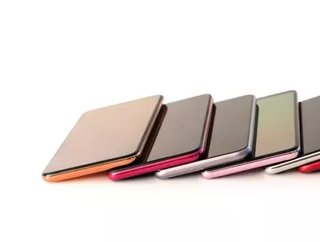List
Technology & AI
The Top 10 uses for your old smartphone
By Harry Menear
April 16, 2021
undefined mins

Rather than let your old phone sit in a landfill or gather dust at home, try one of our 10 tips for giving it a new lease of life.
E-waste - a term referring to any piece of electronic equipment that is discarded - is a huge problem. Every year, smartphones, tablets, TVs, etc are thrown away. In 2019, a report sponsored by the United Nations found that the world discarded more than 53.6mn tonnes of e-waste, a record high.
In addition to the obvious environmental damage caused by the addition of plastics, silicon, metal and other non-biodegradable materials to landfills, the UN’s report found that the improper recycling of e-waste is a huge economic drag. “Only 17.4% of 2019’s e-waste was collected and recycled,” the authors of the report wrote. The remaining waste was determined to contain unused gold, platinum, silver and copper worth an estimated $57bn worth of material - “a sum greater than the gross domestic product of most countries - were mostly dumped or burned rather than being collected for treatment and reuse.”
There are many factors contributing to this issue, from smartphone manufacturers who make it physically difficult (or even flat out illegal) to repair a broken smartphone - let’s not even get into things like planned obsolescence - to a lack of regulatory standards that prevent the shipment of e-waste overseas, where it disappears inside a murky “recycling” supply chain, often never to be seen again. This is - like many environmental issues - not the fault of the individual consumer. In much the same way that, if we all composted our food waste, it wouldn’t have a positive environmental impact that comes close to scratching the surface of emissions attributable to large scale corporations, even if we all make a concerted effort to recycle our old smartphones, and use our existing devices until they break down, it’s not going to make much of a dent in purposefully truncated upgrade cycles and the profit-driven culture of “semi-disposable” consumer technology. Change needs to come from a regulatory level.
That being said, there are some cool or interesting things you can do to give an old smartphone a new lease on life.
10: Wireless Security Camera
Rather than shelling out money for a Ring doorbell or an expensive home security system, why not repurpose an old smartphone to livestream footage to your existing device. Download an app like Alfred, mount your phone using a stand or dashboard suction cup, and make sure it has power. The result: your home security system is up and running.
Rather than shelling out money for a Ring doorbell or an expensive home security system, why not repurpose an old smartphone to livestream footage to your existing device. Download an app like Alfred, mount your phone using a stand or dashboard suction cup, and make sure it has power. The result: your home security system is up and running.
09: Remote Computer Terminal
For those of us using a home computer and a work terminal, the sudden realisation you need to get someone off one and onto the other but you left the office two hours ago can be a major source of frustration. For Android users, a third-party app called TeamViewer lets you access any of your desktop computers from your smartphone.
For those of us using a home computer and a work terminal, the sudden realisation you need to get someone off one and onto the other but you left the office two hours ago can be a major source of frustration. For Android users, a third-party app called TeamViewer lets you access any of your desktop computers from your smartphone.
08: Bring back the iPod
Dedicated media players have been “dead” for a while now, but digging out your old phone and filling it up with Spotify downloads or even your old FLAC files of 2002 bootleg live tapings of Smash Mouth concerts (or whatever it is you’re into) is a great way to have a backup media player if you’re going on a journey or traveling somewhere you don’t have data.
Dedicated media players have been “dead” for a while now, but digging out your old phone and filling it up with Spotify downloads or even your old FLAC files of 2002 bootleg live tapings of Smash Mouth concerts (or whatever it is you’re into) is a great way to have a backup media player if you’re going on a journey or traveling somewhere you don’t have data.
07: Backup Hard Drive
It’s rare these days that you’ll find a smartphone with less than 64GB of storage on it. While backing things up to the cloud, or using a dedicated hard drive is an obvious solution, putting the spare gigs sitting free inside your old smartphone is a great way to provide an additional layer of redundancy for your most valuable files. Besides, getting them off the phone again does have the added benefit of making you feel like a cool spy.
It’s rare these days that you’ll find a smartphone with less than 64GB of storage on it. While backing things up to the cloud, or using a dedicated hard drive is an obvious solution, putting the spare gigs sitting free inside your old smartphone is a great way to provide an additional layer of redundancy for your most valuable files. Besides, getting them off the phone again does have the added benefit of making you feel like a cool spy.
06: Donate it to Charity
There are several organisations out there that will take an old phone off your hands and either pass it along to someone less fortunate or recycle it properly and use the funds to buy a new device for someone that needs it. Cell Phones for Soldiers and the 911 Cell Phone Bank have both been passing along pre-owned mobile devices to those who need (but can’t afford) them for years.
There are several organisations out there that will take an old phone off your hands and either pass it along to someone less fortunate or recycle it properly and use the funds to buy a new device for someone that needs it. Cell Phones for Soldiers and the 911 Cell Phone Bank have both been passing along pre-owned mobile devices to those who need (but can’t afford) them for years.
05: A Budget Gaming Console
Mobile gaming is huge. Last year, as hundreds of millions of people found themselves furloughed or laid off, mobile gaming revenues spiked to hitherto unseen levels. It’s understandable that you want to keep your main phone game-free, for the sake of your own productivity or even just your device memory. But a dedicated gaming phone can make a halfway decent replacement for a console if money is tight, or you just want that separation from work emails while you play Fruit Ninja.
Mobile gaming is huge. Last year, as hundreds of millions of people found themselves furloughed or laid off, mobile gaming revenues spiked to hitherto unseen levels. It’s understandable that you want to keep your main phone game-free, for the sake of your own productivity or even just your device memory. But a dedicated gaming phone can make a halfway decent replacement for a console if money is tight, or you just want that separation from work emails while you play Fruit Ninja.
04: For Emergencies
It’s the law in a lot of parts of the world that any cell phone - regardless of whether it has a SIM card installed - can call the emergency services. If you live somewhere that’s prone to any kind of natural disaster - from flooding to forest fires and hurricanes - you probably already have a bug out bag or emergency stash of supplies. Adding a fully charged smartphone (even if it can only call 911) could be a very literal lifesaver.
It’s the law in a lot of parts of the world that any cell phone - regardless of whether it has a SIM card installed - can call the emergency services. If you live somewhere that’s prone to any kind of natural disaster - from flooding to forest fires and hurricanes - you probably already have a bug out bag or emergency stash of supplies. Adding a fully charged smartphone (even if it can only call 911) could be a very literal lifesaver.
03: A Universal Remote
As our homes become increasingly saturated by smart gadgets and IoT sensors, having a dedicated smartphone in a central part of the house that can control everything from your smart TV to your lights can be incredibly useful. A dedicated smartphone remote can be particularly useful for controlling things like your Apple TV, Fire Stick or Roku.
As our homes become increasingly saturated by smart gadgets and IoT sensors, having a dedicated smartphone in a central part of the house that can control everything from your smart TV to your lights can be incredibly useful. A dedicated smartphone remote can be particularly useful for controlling things like your Apple TV, Fire Stick or Roku.
02: A Surprisingly Good Webcam
This has been the indisputable year of the Zoom call. Video conferencing has become a fact of life for literally billions of people during the pandemic, and poor video or audio quality can have a hugely detrimental effect on the ability for you, as a remote worker, to keep in touch with your colleagues. Most smartphones have better cameras and audio equipment than your average laptop. So, instead of buying an independent microphone and webcam, use an app like DroidCam or EpocCam - or just keep your old phone set aside as a dedicated piece of conferencing hardware.
This has been the indisputable year of the Zoom call. Video conferencing has become a fact of life for literally billions of people during the pandemic, and poor video or audio quality can have a hugely detrimental effect on the ability for you, as a remote worker, to keep in touch with your colleagues. Most smartphones have better cameras and audio equipment than your average laptop. So, instead of buying an independent microphone and webcam, use an app like DroidCam or EpocCam - or just keep your old phone set aside as a dedicated piece of conferencing hardware.
01: Contribute to Scientific Research
It’s a fairly well-known (and somewhat apocryphal) fact that the first generation iPhone had more processing power than the computers that sent Apollo 11 to the Moon. Current generation smartphones are little computing powerhouses and, even if you aren’t using your last handset, its processing power can still be put to good use.
The University of California, Berkeley, has developed an app called BIONIC, which essentially crowdsources computing power from hundreds - if not thousands - of commercial devices to conduct scientific testing. Another such app, Folding@home, went live last year, and uses distributed computing power to help support COVID-19 research. It’s similar to crypto currency mining, where the computing power of multiple devices is used to generate crypto currency like Bitcoin.
It’s a fairly well-known (and somewhat apocryphal) fact that the first generation iPhone had more processing power than the computers that sent Apollo 11 to the Moon. Current generation smartphones are little computing powerhouses and, even if you aren’t using your last handset, its processing power can still be put to good use.
The University of California, Berkeley, has developed an app called BIONIC, which essentially crowdsources computing power from hundreds - if not thousands - of commercial devices to conduct scientific testing. Another such app, Folding@home, went live last year, and uses distributed computing power to help support COVID-19 research. It’s similar to crypto currency mining, where the computing power of multiple devices is used to generate crypto currency like Bitcoin.
Share






